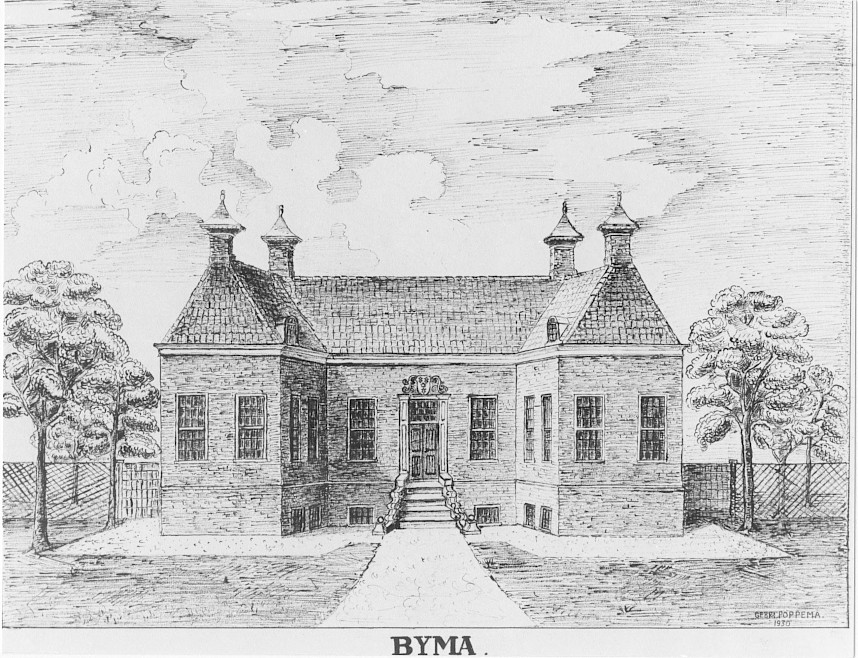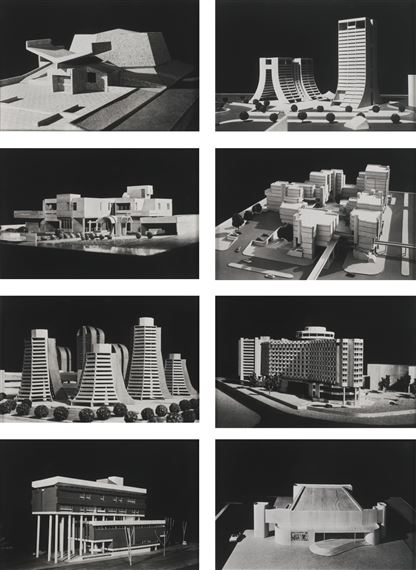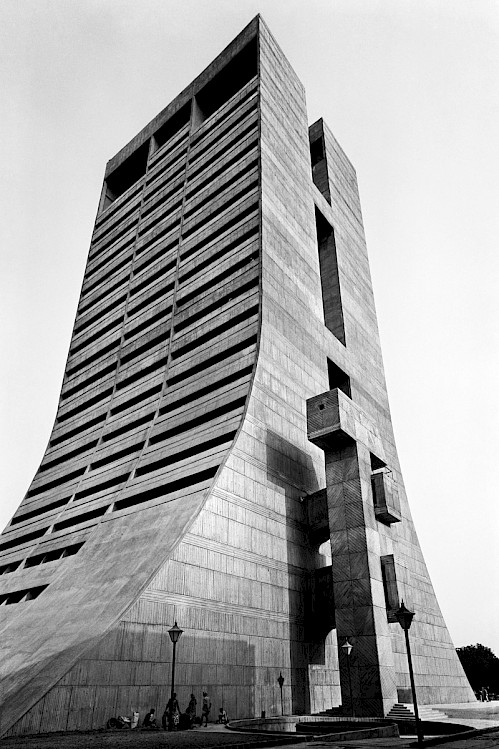Borg Bylma: wander in an archive like a flaneur in a city
by Ayushi Chaurasia, 2024
Guest contribution by Ayushi Chaurasia for PERSPECTIVES.

wander in an archive like a flaneur in a city
A borg is a castle or a manor in Dutch.

A castle or a manor or a borg are places of fantasy. They have occupied the real estate as much as they have flanked spaces in imagination, fiction and film. In most cases, they promise or evoke fantasy.
I have never lived in a manor, I have seen them while walking on the road, in a film, in a novel or an archive. It is a foreign experience to me learnt through external narratives that are not my own. Unable to help myself, I imagine what it must be like to be inside a big house. This imagination leads to fantasy and I build it up in my head.
This fantasy is of a certain kind, perhaps a foreboding desire to meet the unfamiliar or unknown within the large premises of a manor, a castle, a borg.



Hence, the premise of a manor is that of a haunting.
I am a flaneur. I find it exceptionally invigorating to walk slowly on the roadside and look for details of the houses, buildings, address plaques, pavements, dustbins, trees, bushes and so on. My most favourite places to flaneur are residential areas because the possibility of finding abandoned houses is higher. With the might of my will and widespread domestic unrest, I have found many such houses, and bungalows, drifting through different stages of urban decay, often a result of property disputes. I always pay my respect to such establishments. A respect that is endowed for 5 minutes or so, I just stand and stare at it. I look for windows, balconies and other such orifices. When I sufficiently spot them, I look into them a little too intently than I would like to admit. I look for someone, or something looking back at me. And just when my imagination begins to conjure a likely image-a mere outline (silhouette), I quickly look away and begin the scared-stiff sprint known to every organism alive.
This practice of seeking abandoned houses with several rituals attached to it, in many ways stems from a queer desire. To fictionalize an abandoned site is also a queer desire. That is the reason why I gravitate towards the surviving images of Borg Bylma in the Monster archive.

No sooner had I looked at the crevices of Borg Bylma than I flaneured to other places saved in my memory that remind me of Bylma. In my mind, first I visit ‘House by the Railroad' painted by Edward Hopper in 1925. The expanse of the blue sky and the brown railroad suddenly break my visit, only to be parked at the large expanse of blue sky and hay-strewn brown ground at the Maternity Unit, image created by Matthias Jung. My attention spans the circular beam of the maternity unit when I am taken to the photograph of the original house by the railroad that Edward Hopper referred to. It was then that I decided to make a detour into the sets of Psycho (1960), and Addams Family (1964), both Bates Mansion and the Addams Family house seem to be inspired by the ‘House by the Railroad’.



Both Addams Family and Psycho enjoy different flavours of American horror in cinema, embalmed by comedy and thriller respectively with a looming suspense of a haunting about to happen. The haunted structure of the houses holds scope for these stories to unfold. Incidentally in many of my rereadings of Harry Potter, I once again came face to face with a text I had read as a child, which also confirms my subconscious attraction to abandoned houses.
“The villagers of Little Hangleton still called it “the Riddle House,” even though it had been many years since the Riddle family had lived there. It stood on a hill overlooking the village, some of its windows boarded, tiles missing from its roof, and ivy spreading unchecked over its face. Once a fine-looking manor, .. , the Riddle House was now damp, derelict, and unoccupied.
The Little Hangletons all agreed that the old house was “creepy.” Half a century ago, something strange and horrible had happened there … Fifty years before, at daybreak on a fine summer’s morning, when the Riddle House had still been well-kept and impressive, a maid had entered the drawing room to find all three Riddles dead.” JK Rowling, Harry Potter and the Goblet of Fire
This text further complicates the understanding of haunting, violence, reality and fantasy fiction for in the last 4 years, the text via its author has revealed its own queer violence and transphobia.

The black-and-white quality of the 3D-printed miniature reimagination of the Borg took me to the Madan Mahatta archives. Madan Mahatta was a photographer. He created a series of monochromatic photographs of 3D models of many buildings of brutal architecture. New Delhi was swept by the Brutal rough surfaces and massive geometrical forms post-independence, which created a cascading contrast against the floral and ornamented buildings of Delhi’s hence past. Brutalism, as a form of architecture, with its wide walls, vacant of any embellishment, has always made me feel like these buildings were always abandoned and installed to collectively mourn the violence of colonialism.


My hometown Lucknow is filled with abandoned houses. Years of standing ovations have equipped me with identifying the identifiers of abandoned houses that have not been lived in for a while. The first one is a lock on the outer gate, presumably so. The second is the mighty wilderness devouring the architecture from everywhere. The third is the urban decay that has marked the walls of the house with black patchy patches either made by rain or weather or just by whoever it is that lives inside now. The lack of paint on the walls is a very active identifier. It supposes that it has not been cared for. No matter what the architectural style is, in the end, they all become gothic. When I look at the old abandoned gothic facades, I wonder about all the objects that still might be inside. What kind of violence might have led its occupiers to abandon? What all must they have left behind?

My own house is the opposite of abandoned ie. it is lived in to its full capacity. It hoards objects belonging to five living members and one dead. My mother passed away in February 2019. Ever since she passed, I have maintained the objects that she left behind. She used to keep all her belongings inside the bed storage. It is the bed that she had received in her dowry. Her name was Priya. She hardly kept the daily items of use inside her bed. Instead, she kept the things she hardly used such as boxes of silk threads in 100 colors, different fabrics, her stitching and embroidery portfolios and projects, toys from childhood, abandoned bags, a collection of sandalwood statuettes, her paintings and sketchbooks, my father’s stamp collection, greeting cards and letters from the 1990s and everybody’s marksheets. All the objects have one common feature, they had all been left behind, not just in the sense of dying and being left behind but every object was connected with activities that at some point were left behind by my mother.
To my surprise and my family’s horror, these acts of walking and maintaining the objects left behind eventually led me to become an archivist. I have always approached an archive as a flaneur.
I find it exceptionally invigorating to walk slowly in an archive and find small details, ie. metadata in this case such as who, when, where, why and so on. The chances of finding abandoned and forgotten objects are much higher. I find and make my own way, I get lost, I find something strange that piques my interest and I spend some time looking at its crevices, trying to figure out who am I looking at through this artefact.
Each artefact in an archive is much like the several objects that flank a road or a locality. One can get used to both and start ignoring their existence but close and continuous inspection reveals details that connect them to events, and people. An archive very much activates my tradition/pattern/practice/desire of finding hints of fantasy, perhaps a haunting.

It is impossible to flaneur through a city or an archive and not make connections with experiences and objects stored in memory. This makes any archive or a city alive even though it might hold objects left behind.

The murders associated with the premises of Borg Bylma become the real haunting. In an absolute haunting, mystery kills itself, leaving behind a feeling of deep despair. However, the mind hovers from one place to another.
Violence seems to be fluttering around the themes of this essay like a bee. I need to address it. There is violence in abandoning a house, in leaving things behind, in the archive, in the crevices of my memory,(even in Rowling’s tweets, and in the responses of the activists), and in the fictionalized imaginary scapes and scenarios that I visit when I am confronted with houses or objects in a city or an archive.
I often think about violence, death and anger in my works of collage art, where I create outlandish narratives by cutting and pasting buildings, foliage, animals and the wilder side of my imagination.
In one of my works called ‘Sleeping next to the grave’, I reimagine a Lodhi tomb in vibrant colour (actually situated in Lodhi Gardens, a popular picnic spot in Delhi), sprinkle my collection of pressed foliage around it and reinstate the experience of sleeping next to a grave where the dead and the living choose to sleep next to each other. The violence that separates the living and the dead is almost forgotten and concealed in the public but at the same time alive and present in my imagination.

Death is often violent. It creates a haunting. These hauntings leave behind objects and houses that hold memories of the violence. The objects of the monster archive, eg. The images of Borg Bylma in diverse mediums that I flaneur through are evidence of the haunting of the murders that take place.
When the evidence is revealed the desire to appropriate and fictionalize the events as fantastical becomes fraught perhaps distraught.
___________
From the act of complicating this desire, began another collage series, that I started working on in May of 2024. I wanted to capture the welcoming nature of abandoned houses playing with the nature growing around the houses. In one of them, I reimagine Borg Bylma.



—x—x—
Many more abandoned houses to follow.





